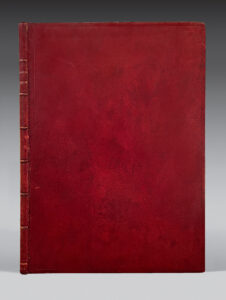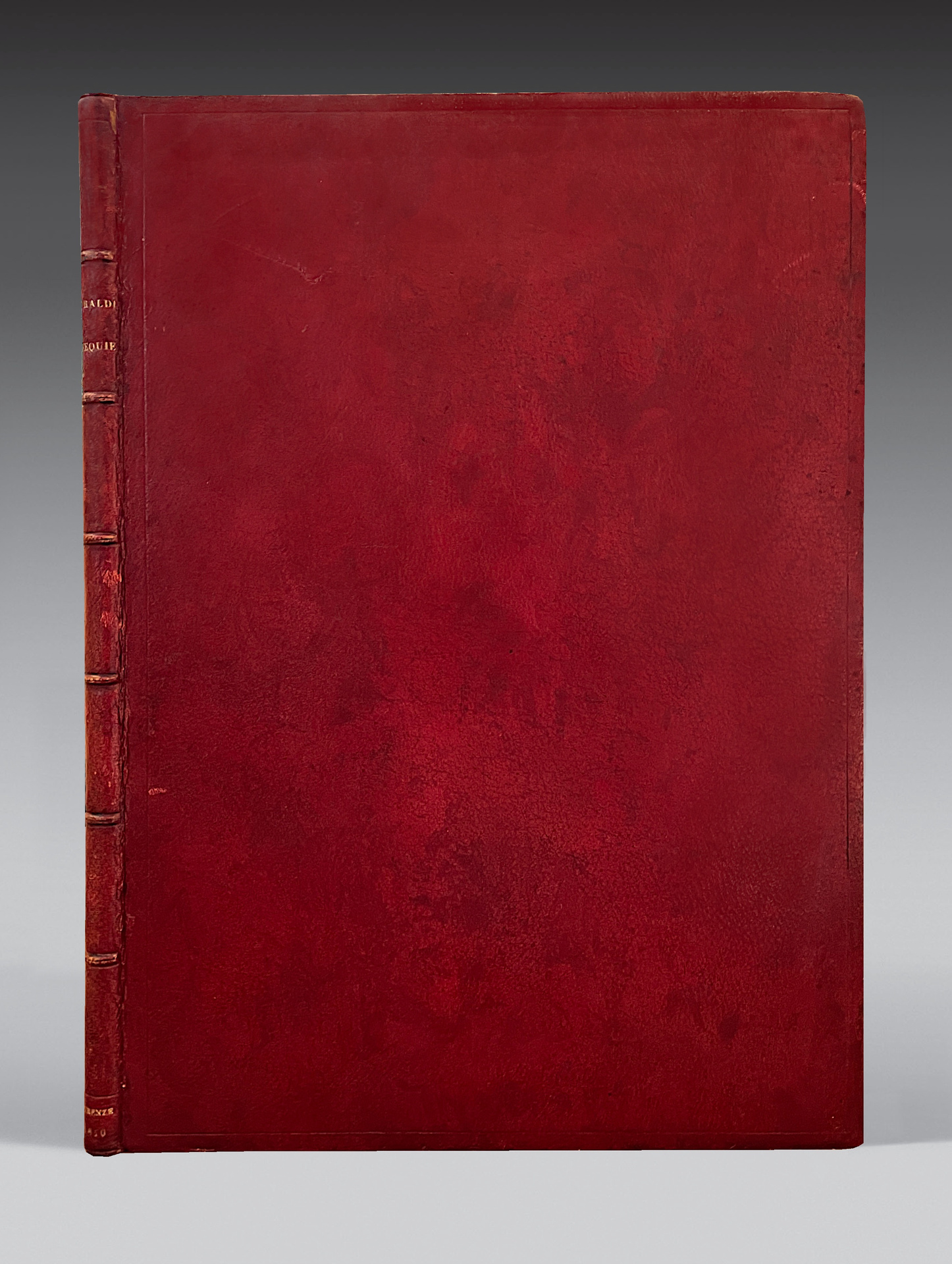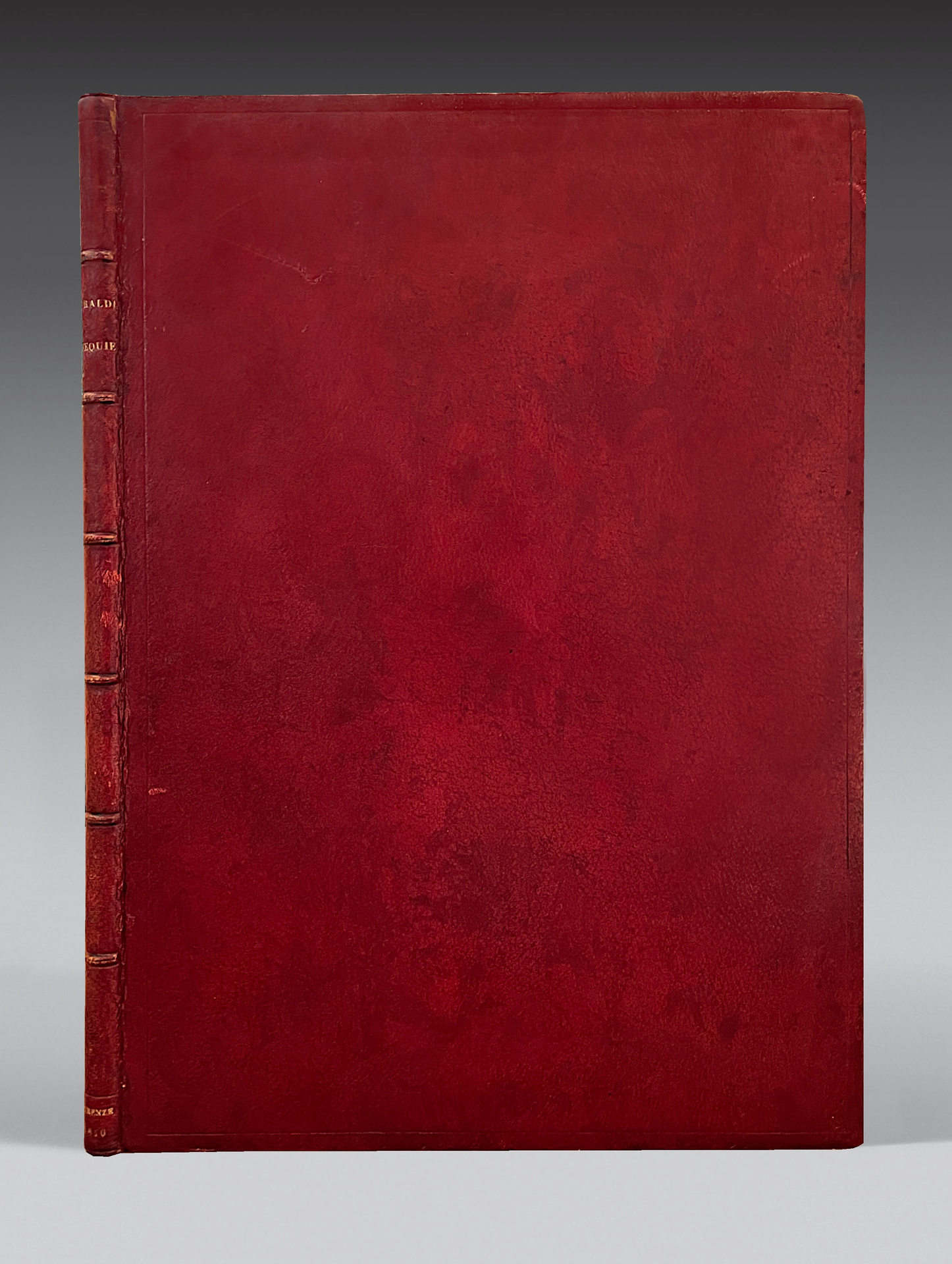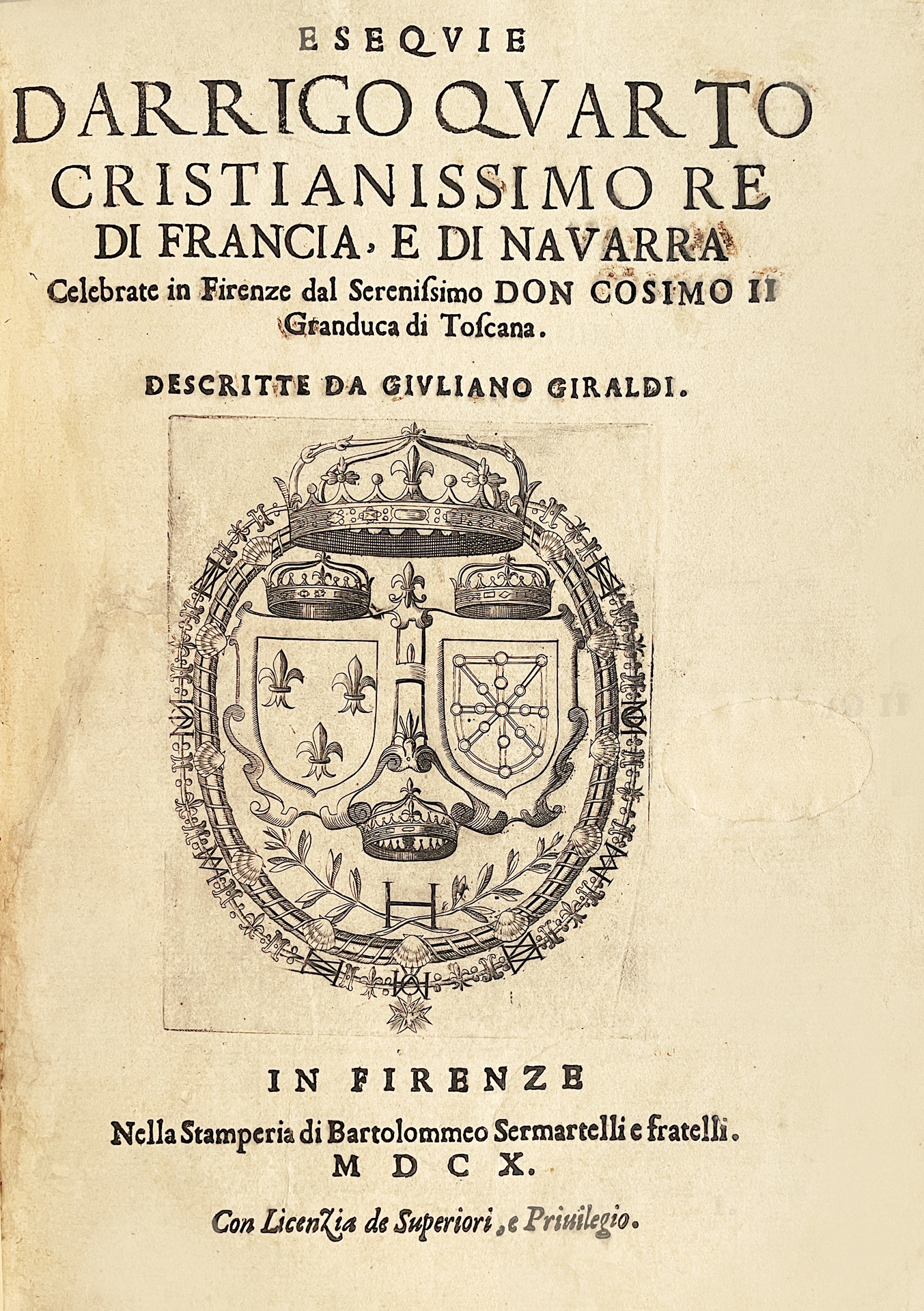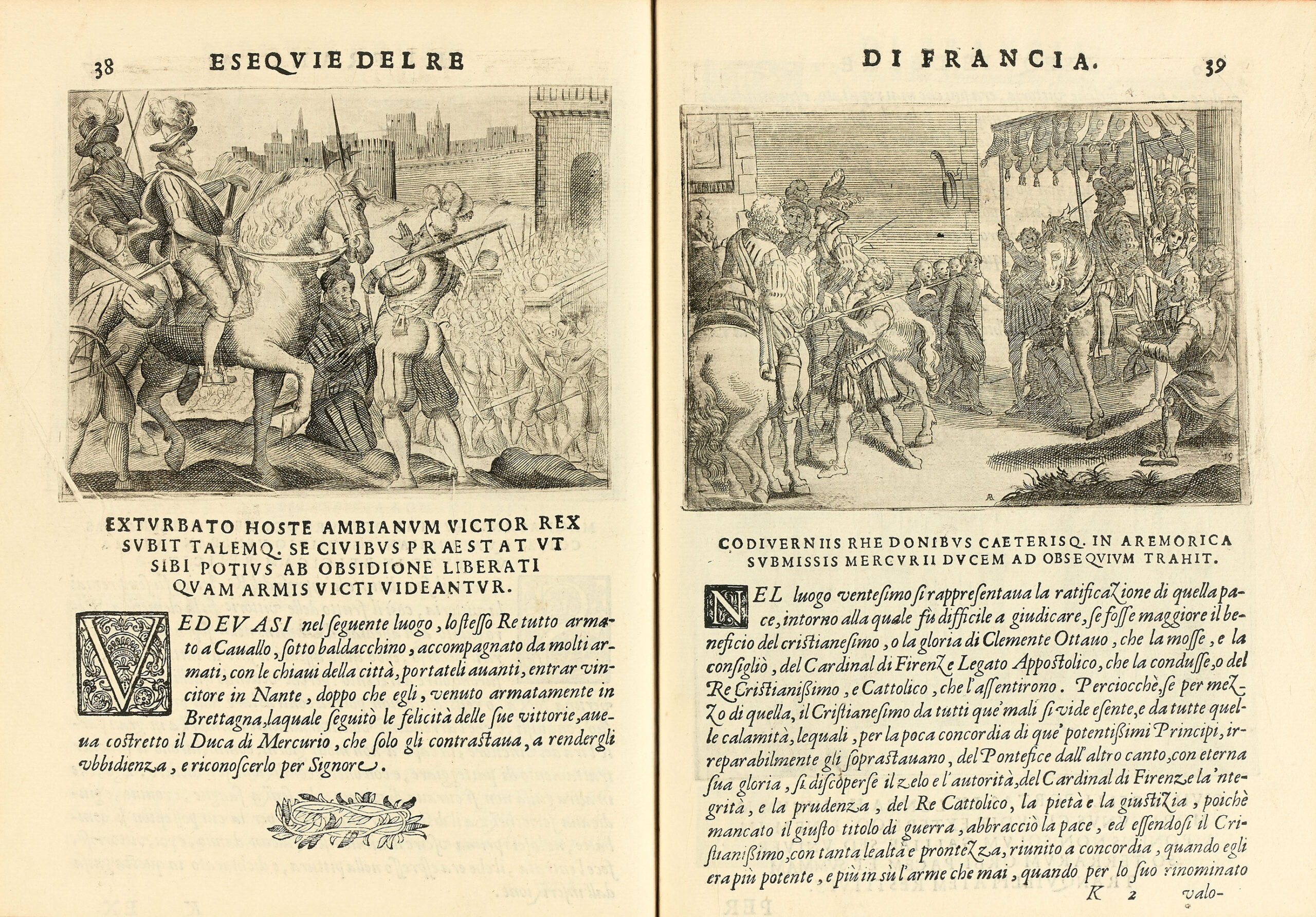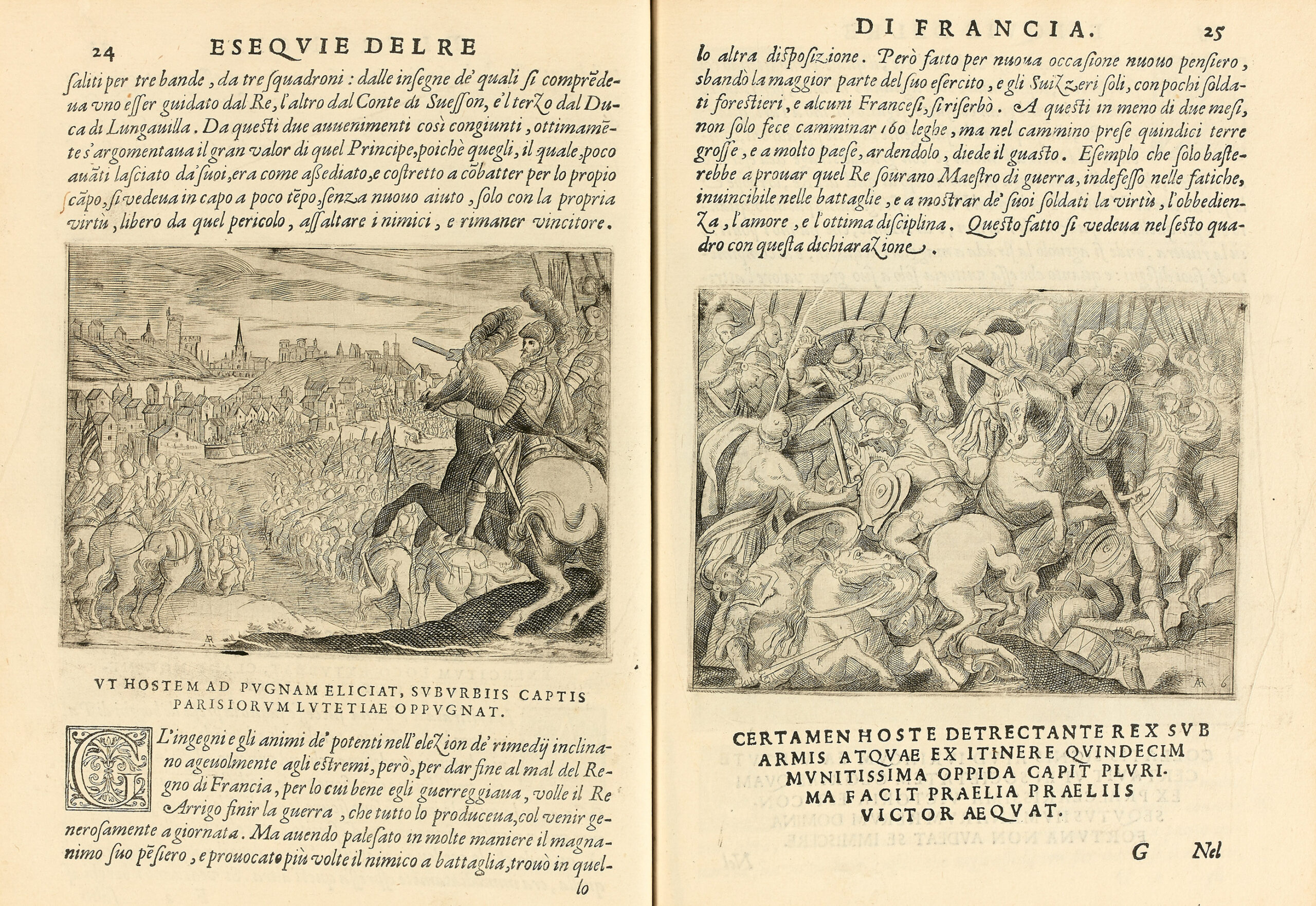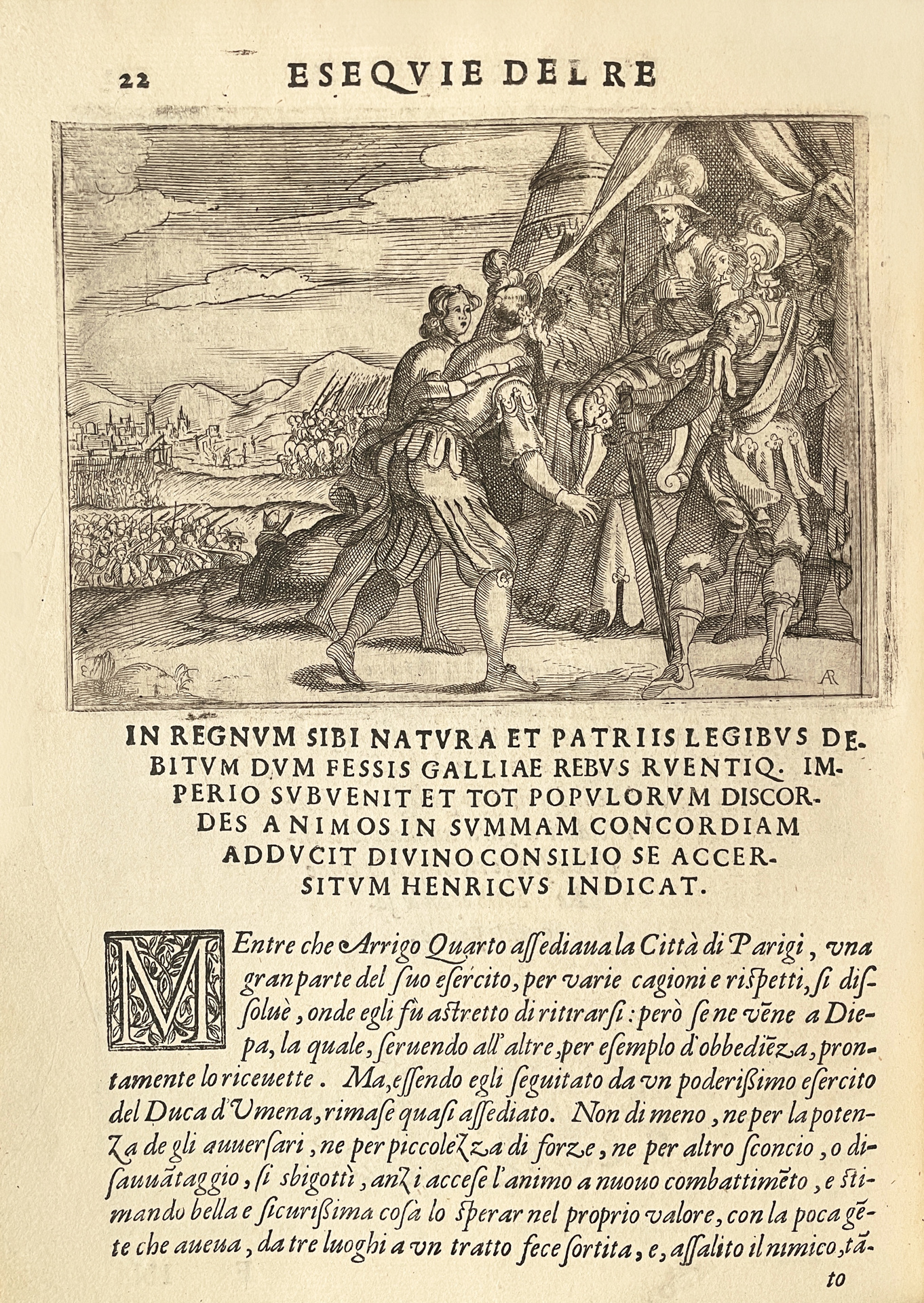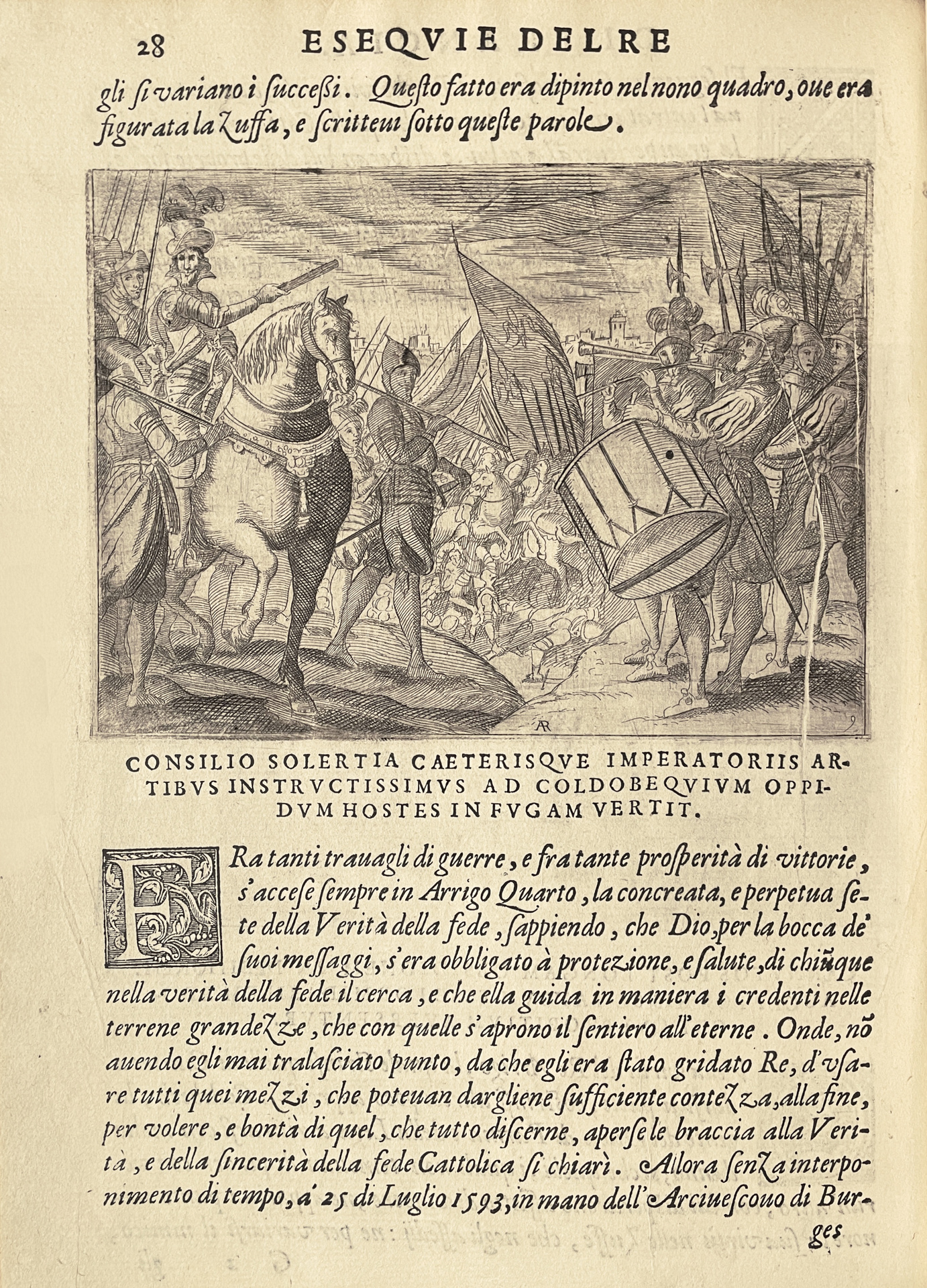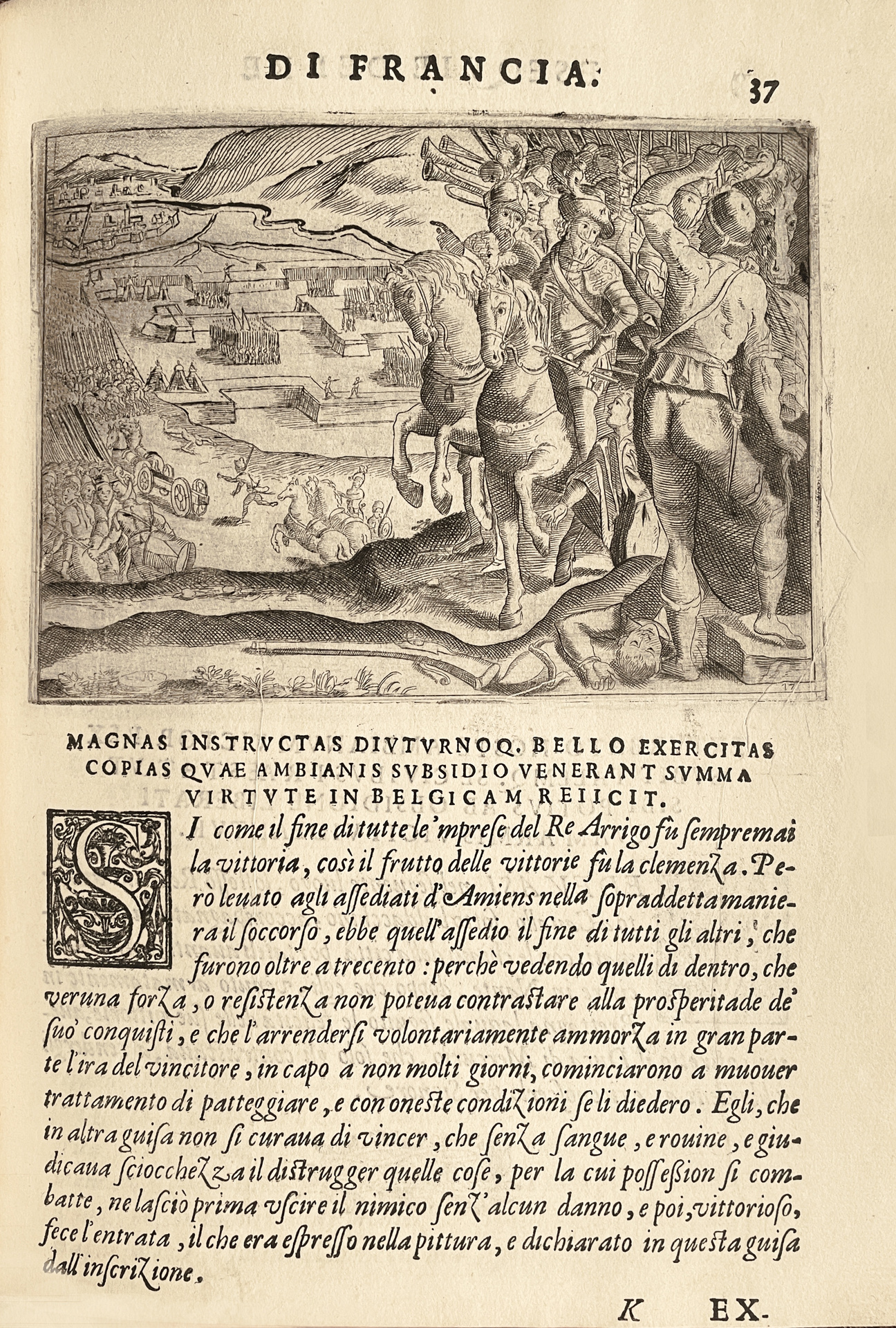Florence, Bartolommeo Sermartelli e fratelli, 1610.
Small folio [263 x 193 mm] of 51 pages illustrated wtih 26 etchings, large coat of arms on the title, restoration in the margin of the title and ex libris formerly cut. Red morocco, blind-stamped fillet around the covers, inner border, gilt edges. Binding from the 19th century.
Very rare first edition and first issue of this suite illustrating the life of King Henry IV (1553-1610).
Cicognara 1413; Gamba 2750; Moreni I:442; Ruggieri 359.
In 1610 an illustrated booklet by Giuliano Giraldi was published in Florence entitled Esequie d´Arrigo quarto Cristianissimo Re di Francia e di Navarra Celebrate in Firenze dal Serenissimo Don Cosimo II Granduca di Toscana (Florence, Bartolomeo Sermartelli, 1610). The death of Henri IV did in fact give place to one of these imposing funeral ceremonies of which the Medici had made a specialty, ceremony of which Giraldi’s work perpetuated the memory. The etchings signed by Alovisio Rosaccio (a Florentine engraver and printmaker, a pupil of Tempesta) reproduced in simplification, but in a perfectly recognizable way, the subjects painted for the solemn service given on September 16, 1610 in the Cathedral of San Lorenzo de Florence.
Florence received the news of this sudden death on May 23, and the whole court mourned. The Grand Duke Cosimo II, who had succeeded his father Ferdinand I in 1609, decided to pay the deceased monarch a solemn tribute in the form of a funeral in effigy in the Church of San Lorenzo.This ceremony was part of the practice of the imposing funeral rituals with strong political significance of which the Medici had made a specialty and of which San Lorenzo was also the scene to honor Philip II King of Spain, in 1598, or, later, Margaret of Austria in 1612.This celebration, one of the first acts of the principate of young Como II, highlights the alliance between France and the Grand Dukes of Tuscany, since the marriage of Marie de Médicis with the Béarnais in 1600.
In 1610, it was a question not only of attesting the bond between the two dynasties, reinforced by the marriage in 1600 of Marie de Médicis and Henri IV, but also and especially of underlining the legitimacy of the regency of Marie and the Louis XIII’s right to inheritance.Because such a solemnity was to have a wide resonance, leading figures were associated with its organization; Giulio Parigi (1571-1635), architect and engineer of the court of Florence, was thus in charge of the scenography. The commemoration with great fanfare took place on September 15, 1610; to decorate the interior of the basilica, twenty-six large canvases in grisaille evoking the deeds and virtues of the king were placed on the counter-facade and along the nave, entirely covered with mourning ornaments and theatrically lit by a huge amount of candles.
The twenty-six large canvases are executed by Tuscan artists close to the Medici, including Jacopo da Empoli, Bernardino Poccetti or Francesco Curradi: a real collective work that very temporarily dressed the walls of the Basilica of San Lorenzo, all draped, for the occasion, with funeral hangings. This set, although of ephemeral presentation, nevertheless had a real influence: it was a source of inspiration for the series of paintings by Rubens commissioned by Marie de Médicis for the decoration of the Luxembourg Palace.
For Henri IV, the content of the twenty-six main paintings preferred a research of historical reality excluding any recourse to fable or mythological artificials.
The text opens with an oration by Como II de Medici, Grand Duke of Tuscany, then follows the 26 engravings suite, each accompanied by a legend in Latin and an explanatory text in Italian.
“The twenty-six painted episodes describing the deeds of the monarch and completing the funeral decoration of the church were transcribed in as many copperplates (rami bellissimi) for the printed description given by Giuliano Giraldi to the presses of Bartolomeo Sermartelli from September 1610. In their function of moralizing exemplarity, these chosen pieces constitute one of the first cycles retracing the Henryian gesture as a whole, and as such they claim themselves if one believes Giuliano Giraldi: ‘Ma quello, che più d’ogni altra cosa moveva gli huomini a maraviglia, e la grandezza chiariva di questa perdita, si era una scelta delle più segnalate prodezze del re Arrigo ‘. The same Giuliano Giraldi further tells us that the church was opened to the people “a] goder della vista dell’apparato” as an edifying ephemeral destined to survive in the memory of the city “.
Precious copy of this rare work of the highest historical and artistic interest preserved in its red morocco binding from the nineteenth century.
